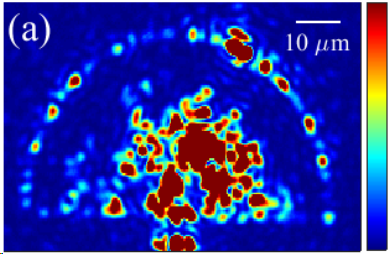High throughput speckle spectrometers based on multi-fractal patterns
One of the key trade-offs in optics is that the higher the resolution of a spectrometer, the greater the footprint that it needs. However, one class of spectrometers where this relation does not hold are speckle spectrometers, based on multiple scattering of light. Yet in these structures, this trade-off is replaced by a new one, namely the trade-off between the device resolution and the optical throughput. Or so it seems.
In our latest paper we have shown that by choosing different scattering distributions to create the optical speckle, we can realize on-chip speckle spectrometers that have the same speckle correlations – a measure of the device resolution – while increasing the device throughput by a factor of 4. This is crucial, as a higher throughput means that weaker signals can be detected or an improved signal-to-noise ratio.

To achieve this feat we tested multiple different scatterer distributions with multi-fractal statistics, that can achieve the same speckle correlation with a lower number of scattering sites, which seems to be key to increasing the optical throughput through our device.
This work was conducted together with the Nanomaterials & Nanostructure Optics group of Prof. Dal Negro at Boston University and is now published in Optical Materials Express.